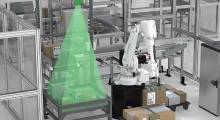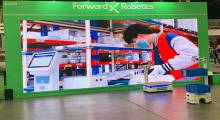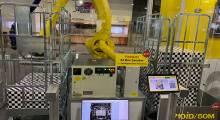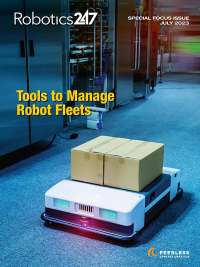Soon, industrial robots in warehouses could be smart enough to know which one has the right of way in busy aisles. Researchers at the Rochester Institute of Technology, or RIT, are developing an intelligent materials handling system for warehouses that integrates lidar sensors and artificial intelligence.
With supply chain challenges brought on by the pandemic and increased demands for e-commerce, technology can provide the support businesses need to improve productivity, efficiency, and safety in a warehouse setting.
“This is one area where robotics and autonomous material handling can help,” said Michael Kuhl, professor of industrial and systems engineering in RIT’s Kate Gleason College of Engineering. “Robots can work longer periods of time—not necessarily to replace jobs, but on some of the manual, non-value-added tasks. It means a change of focus of jobs, with people needed to design and maintain fleets of vehicles and robots.”
RIT builds on Raymond Corp. collaboration
Kuhl and the project team received a grant for “Effective and Efficient Driving for Material Handling,” a one-year, $300,000 project sponsored by The Raymond Corp. It advances earlier work with the company that established task selection and path planning of individual autonomous mobile robots (AMRs).
New work focuses on advanced avoidance and communication strategies for multiple robots and humans in the warehouse environment.
In warehousing operations, there is often a mix of autonomous and human-operated equipment. Avoidance strategies need to be integrated with task options, path planning, and recognition of multiple robots able to communicate with one another in real time, and to recognize humans who also will be interacting in the warehouse space.
“We have information about localization, the different types of sensors that we use within the warehouse to try to identify where the robots are located, and the actual movement of the robot,” said Kuhl. “Can they plan to get from the current location to destination safely and efficiently? They can have a short path, but they still need to avoid other robots and people.”
Using deep neural network strategies—types of machine learning techniques—RIT researchers trained the system components to make specific, sequenced decisions based on common tasks, but also infrequent or unusual actions that might occur in the warehouse environment.
The team is also studying Wi-Fi and cellular communications networks within warehouses as viable solutions. New standards for cellular technologies permit increased individual cellular communication between individual devices, Kuhl explained.
“In terms of people and vehicles interacting, could we take advantage of the sensors of multiple vehicles moving around the warehouse?” he said. “If a vehicle is coming down one path, and it sees a person or another vehicle coming out of an aisle, can they communicate and make a decision about what to do next? Who has the right of way?”
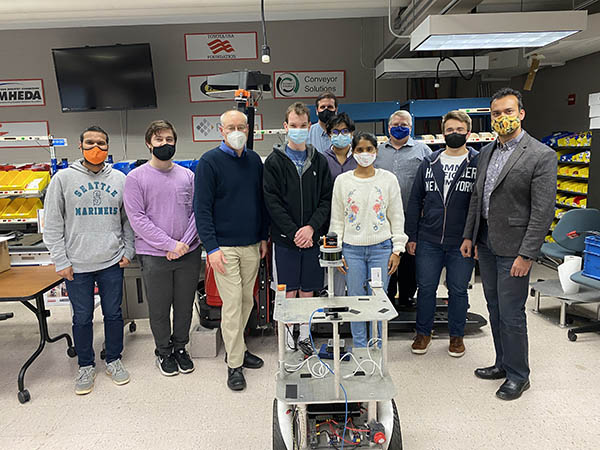
Robots better able to react
The team has found that robots will be able to react. In field experiments at Simcona Electronics Corp., a Rochester, N.Y.-based company that sources and procures electrical and mechanical components for manufacturing, the team tests the robotic technology in its 50,000-sq.-ft. facility.
“We needed the real setting to be able to do this work and to move it forward,” said Kuhl. “They provide an extremely valuable resource for us.”
He has has been working with campus partners Amlan Ganguly, associate professor and department head, and Andres Kwasinksi, professor, both in the computer engineering department in RIT’s Kate Gleason College of Engineering; and Clark Hochgraf, associate professor in the electrical and computer engineering technology department in RIT’s College of Engineering Technology. Also participating on the project team is Maojia Li, a recent RIT engineering doctoral graduate.
Article topics
Email Sign Up




